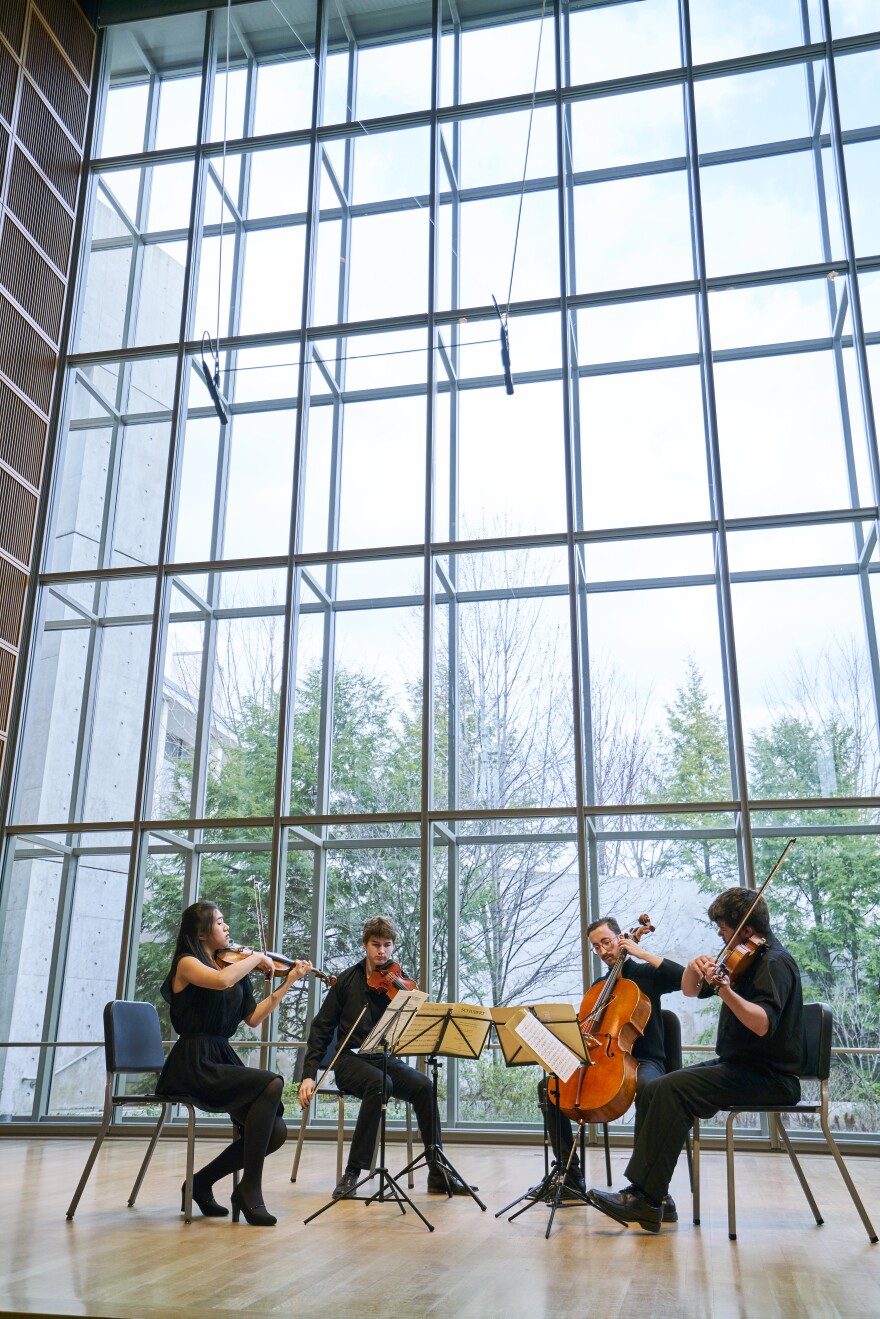The Cleveland Institute of Music is under new leadership. In today’s State of the Arts, WKSU’s Vivian Goodman reports that the new president hopes to strengthen the institute’s reputation as a world-class training ground for classical musicians.
The discordant mix leaking from the practice rooms into the hall corridors is music to Paul Hogle’s ears.
“I love to hear that, that blend of sounds. It’s just magical.”

Hogle began his tenure at the Cleveland Institute of Music in July with a listening tour, but the listening continues in his office, where the door is always open, and in classrooms, corridors and concert halls.
Listening and leading
Mixon Hall is the institute’s newest performance space. The state-of-the-art recital hall opened in 2007 as part of a $40 million expansion and renovation.
“People fall in love with Mixon," Hogle has found. “They crave, when their recitals are coming, to perform there.”
The institute's previous leader, former Julliard Quartet violinist Joel Smirnoff performed and conducted in the intimate 235-seat hall. But Hogle, who took the reins in July, is not likely to. He’s the first president in CIM’s history who is not a professional musician.
He does, however, keep a trombone in his office.
“That is my great-grandfather’s trombone. I have played it a little bit. It’s from around 1900. It’s had a lot of work done on it. It’s not very easy to play.”
Orchestra management background
Hogle studied trombone at the University of Evansville, but his music management courses set him on a different career path. Right out of school he was running orchestras, from the Evansville Philharmonic to the Indianapolis Symphony, from the Chicago Symphony to the Atlanta Symphony, and from Baltimore to Detroit.
Hogle is credited with helping rescue the Detroit Symphony after a 2010 musicians’ strike nearly destroyed it. He was executive vice president in Detroit, but he’s always wanted to be a chief executive. That was part of what attracted him to the job at CIM. That, and getting to come back home. Hogle was born and raised in Ashtabula.
“Graduated from Ashtabula High School, and then went away to college. This is the first time I’ve lived in Ohio as an adult.”
CIM Parent
But he’s stayed connected as a self-described “unendingly passionate Ohio State Buckeyes fan” and as a parent. Hogle’s violist daughter graduated last year from CIM.
He says his perspective as a parent helps in his new job, and his predecessor, Joel Smirnoff, has helped, too.
“He was one of the very first people to call me when I got the job. I knew Joel as a parent. So this wasn’t an awkward transition at all. He’s been an unbelievable help to me.”
Smirnoff led the institute for seven years and helped nurture the career of recent graduate Daniil Trifonov. The Russian pianist has gone on to perform with the world’s leading orchestras.
“At the end of the day,” says Hogle, “we are part of him. He bears the CIM brand as he goes forward.”
Classical stars of the future
Hogle envisions current students following Trifonov’s path to fame. “I hear them practicing. I see them in the rehearsals. I would like to think that all 422 of our students are superstars.”

CIM graduates currently perform with the world’s leading ensembles including the Boston and Chicago Symphony Orchestras, the New York Philharmonic, and the Cleveland Orchestra.
Hogle says the stronger the link between the institute and Severance Hall, the more students benefit. And he thinks the practicing musicians who teach them do, too
“I hope that’s true for them. I hope that we provide the satisfaction of the ancient craft of conveying what they have learned and their mastery to the next generation.”
Severance Hall connection
Half of the Cleveland Institute of Music's faculty are current or retired Cleveland Orchestra members.
“CIM is not CIM without the Cleveland Orchestra,” says Hogle.
He wants to forge an even tighter connection. He’s made overtures to Music Director Franz Welser Most. “Franz conducting the CIM orchestra is part of my dream. He leading our orchestra at Severance Hall is something we must accomplish.”
Of more immediate concern is maintaining the conservatory’s accreditation.
The Higher Learning Commission has been monitoring the institute’s academic and financial strength since last year. Its final report is expected next summer.
“We expect it to be a positive report,” says Hogle, “because we have made great progress on the things that they were talking with us about.”
Hogle agrees with the commission about the need to develop a systematic process for evaluating faculty. “I’ve never lived in an environment without a regular set of evaluations.”
Living up to its reputation
Hogle is clearly delighted to be back in Northeast Ohio. “It has the best orchestra in the world, the best museum in the world,” and he likes to think the best conservatory in the world.
He says his job now is to keep it that way.
“So when we talk about the best level of studio teaching, renowned faculty, a top American orchestra at the student level, great physical spaces, I think it’s my job to make sure that the message ... is true in every corner.”





